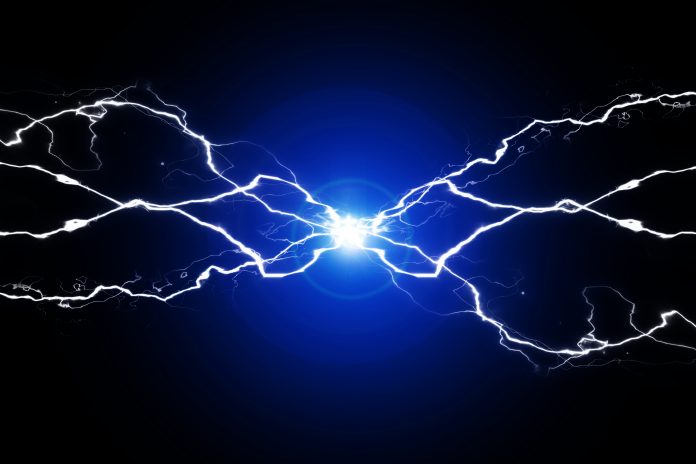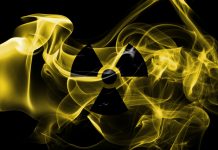This article is the last one in a 5 part series on the history of fusion research and development by Matteo Barbarino, a Nuclear Plasma Fusion Specialist from the International Atomic Energy Agency (IAEA)
The 28th Fusion Energy Conference (FEC 2020) will take place in Nice, France, this year in October. Meanwhile, let’s glance through some of the core papers from the FEC 2018 and learn about how they relate to historic developments in fusion energy research.
Overview of HL-2A Recent Experiments (OV/5-1)
The HL-2A tokamak at the Southwestern Institute of Physics (SWIP), in China, is a great example of how fusion research institutes work together worldwide and support one another. Since 2002, this tokamak operates using some parts from the old German tokamak ASDEX.
In addition, scientists and engineers at SWIP are currently working on an upgrade of the machine, HL-2M, which will come online this year. When operational, HL-2M will contribute to filling the gap in the understanding of magnetic confinement plasma physics for the operation of future fusion power reactors.
This paper highlighted the significant progress achieved on the HL-2A in reaching high performance operation and plasma instabilities control.
First plasma in HL-2A was obtained at the end of 2002, and first results from the experiments were presented at the FEC 2004:
LIU, Y., et al., “Recent advances in the HL-2A tokamak experiments”, Fusion Energy Conference (Proc. 20th Int. Conf. Vilamoura, 2004, Paper No. OV/5-1Ra) IAEA, Vienna (2005).
Physics Research on the TCV Tokamak Facility: from Conventional to Alternative Scenarios and beyond (OV/5-2)
An all-round device with highly flexible heating systems, extended diagnostics and the capability of producing a variety of plasma shapes, the TCV tokamak at the Swiss Plasma Center is not only employed in a large number of research areas in support of ITER, but also in exploring advanced tokamak scenarios and divertor configurations with an eye to DEMO. Studying alternative shapes can help improve plasma confinement and stability.
This paper highlighted recent progress and results from disruption avoidance and mitigation, and first successful generation of a doublet (figure of eight) plasma configuration, among others.
First experimental results from TCV and its plasma shaping versatility were presented at the FEC 1994:
LISTER, J.B., et al., “Variable configuration plasmas in TCV”, Plasma Physics and Controlled Nuclear Fusion Research (Proc. 15th Int. Conf. Seville, 1994, Paper No. CN-60/A5-2) IAEA, Vienna (1995) 627.
Overview of Operation and Experiments in the ADITYA-U Tokamak (OV/5-3)
ADITYA is the first tokamak fully designed and built in India. This medium-size tokamak contributes to the international database of experimental results in disruption mitigation and it was recently equipped with a new divertor.
This paper highlighted the results achieved operating the upgraded device.
ADITYA first results were presented at the FEC 1992:
JHA, R., et al., “Intermittency in tokamak edge turbulence”, Plasma Physics and Controlled Nuclear Fusion Research (Proc. 14th Int. Conf. Würzburg, 1992, Paper No. CN-56/A-7-9) IAEA, Vienna (1993) 467.
Tokamak Research in Ioffe Institute (OV/5-4)
Founded in 1918, the Ioffe Institute, in Russia, recently celebrated its 100th anniversary and more than six decades of remarkable contributions to plasma physics and fusion research.
This paper presented recent tokamak research on GLOBUS-M and TUMAN-3M.
The first small tokamak at Ioffe Institute, TUMAN-1, was put into operation in 1964:
GOLANT, V.E., et al., “Plasma compression by a magnetic field in a toroidal-type device”, Plasma Physics and Controlled Nuclear Fusion Research (Proc. 2nd Int. Conf. Culham, 1965) IAEA, Vienna (1966) 829.
NSTX-U Theory, Modelling and Analysis Results (OV/5-5Ra) and Overview of New MAST Physics in Anticipation of First Results from MAST Upgrade (OV/5-5Rb)
NSTX at the Princeton Plasma Physics Laboratory, in the United States, and MAST at Culham Centre for Fusion Energy (CCFE), in the United Kingdom, are two fusion devices operating since the late 1990s based on the spherical tokamak concept – an apple-shaped machine configuration that holds the plasma in tighter magnetic fields, forming a more compact core.
Scientists and engineers at the Oak Ridge National Laboratory (ORNL), in the United States, and at CCFE were pioneers of this concept which features a high plasma beta (the ratio of plasma to magnetic pressure) and a very large bootstrap current which are key requirements for steady-state operation. These attributes may offer the possibility of a having more compact device for the same total fusion power but increase the demand on the materials technology.
While MAST is undergoing an upgrade which is nearing completion, NSTX-U (U=Upgrade) operated for some weeks in 2016 but it has been undergoing repair since then. When back online, both machines will provide new capabilities to address key physics and technologies issues for the operation of ITER and also for the performance of future spherical tokamaks.
These papers highlighted the results from NSTX-U studies and the analysis of MAST data and numerical modelling which contribute to predicting the performance of future spherical tokamaks.
The idea of a spherical tokamak concept raised from magnetohydrodynamics (MHD) stability calculations indicating that a low-aspect-ratio tokamak would allow very high plasma beta. News of a proposal for a Spherical Torus Experiment (STX) was announced at the FEC 1986:
CARRERAS, B.A., et al., “MHD stability in low aspect ratio tokamaks”, Plasma Physics and Controlled Nuclear Fusion Research (Proc. 11th Int. Conf. Kyoto, 1986, Vol. 2, Paper No. CN-47/E-I-2-4) IAEA, Vienna (1987) 53.
Editor's Recommended Articles
-
Must Read >> A history of fusion research and development
-
Must Read >> A history of fusion research and development Part 4













